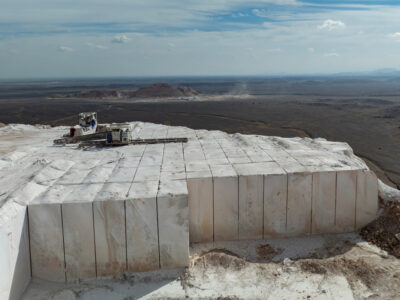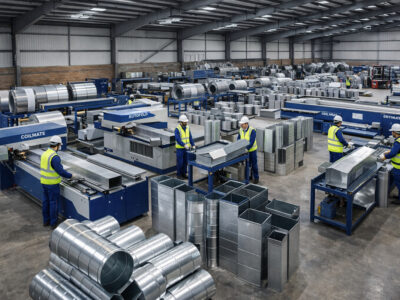Apple claims that there are already 800,000 Final Cut Pro users worldwide. There is no doubt that this new version will expand the community because of some of the new features that have been incorporated into this package. The main innovations introduced with version 2 are a brand new codec for managing uncompressed video at lower file sizes; a new feature that allows mixed video formats and frame rates on the same timeline in Final Cut Pro; a completely redesigned version of Motion, the compositing application included in the bundle; and a brand new colour correction workflow that is usually present in more expensive editing packages.
Apart from these main features, Final Cut Studio 2 sports enhanced versions of Soundtrack Pro and Compressor, the tools for sound design and digital content delivery.
FCS 2 is a complete solution for digital video editing and as a bundle, comprises six applications fully integrated with each other. The applications are Final Cut Pro 6 for non linear editing, Motion 3 for compositing and special effects, Colour for high quality colour correction, Soundtrack Pro 3 for sound design and music scoring, Compressor 3 for converting audio and video contents in all standard file formats and DVD Studio pro for DVD authoring.
Final Cut Studio 2 costs $1,299 or $499 to upgrade. Those with any prior version of FinalCut Pro may upgrade to the full Studio 2 for $699.
But first, let’s take a closer look at each application and their new features:
Final Cut Pro 6
Final Cut Pro 6 introduces a new audio video format titled ProRes 422. This is a new post-production format that offers uncompressed HD quality at SD file sizes. My tests showed how this format could squeeze a terabyte file of uncompressed HD video into a mere 170 GB file with no loss in quality whatsoever. This is the ideal format to manage uncompressed video over an XSAN storage network or for on-the-field reporters that can manage HD files on a laptop.
Companies like Panasonic and Sony are supporting ProRes 422 as they continue to innovate on the next generation of HD cameras. Also, ProRes 422 is the ideal standard for broadcasters and production companies that are looking to implement Final Cut Server in their technical facilities. HD video over LAN is now a dream come true.
Another new feature in FCP 6 is the Open Format Timeline. Now, it is possible to freely mix clips with different formats in a single sequence and playback the sequence in real time. This allows us to combine formats such as SD and HD video, full-resolution and offline-quality video, and video with mixed frame rates, field dominance, and scanning methods (interlaced and progressive). FCP can automatically conform a sequence’s settings to the settings of the first clip edited into the sequence.
This allows us to make the sequence match your clips without ever opening the Sequence Settings window. hen you mix video with different frame dimensions in a sequence, some video must necessarily be scaled to fit the dimensions of the sequence. Clips whose frame dimensions are larger than those of the sequence are always scaled to fit in the sequence, but it is possible to choose how smaller clips are handled with the ‘Always scale clips to sequence size’ option.
Another innovation in FCP 6 is the Smooth-Cam Filter. This stabilises jitter and shakes present in clips shot with handheld devices such as Prosumer DVCAMs. I have tested the filter on some shots and as long as the “shaking” is not extreme, the filter works smoothly and can be very useful for filming in environments, where a tripod is not available.
Final Cut integrates with Motion 3 much better in FCS 2 and now, it is possible to edit some of the motion templates directly into Final Cut without launching Motion. As they share the same rendering engine, this process is very convenient especially on laptops or lower-end machines without a lot of RAM.
Motion 3
Motion has got the biggest upgrade this time. Previously, one of the biggest limitations of Motion 2 was the absence of a full 3D mode. Compositions with camera movements and lights were not possible, and even if the Motion’s particle generator was impressive, there were alternative platforms like Adobe After Effects that had some winning points over Motion because of its 3D mode.
Motion 3, however, supports a 3D, multi-plane compositing environment, allowing us to create 3D motion graphics with depth and new levels of realism. In the Motion 3D workspace, it is now possible to add and animate cameras, images, and text along paths in three dimensions, create particle systems and replicators with height, width, and depth and apply behaviours.
Behaviours are perhaps the most underestimated, yet most powerful resource within Motion. Already present in versions 1 and 2, behaviours are animation parameters that can be applied to objects without having to insert keyframes manually. Behaviours are designed to be flexible and can be combined with one another to create different kinds of effects. Using behaviours, motion graphics design becomes interactive. They can be used to animate the parameters of nearly any particle system emitter, shape, mask, replicator, filter, generator, camera, or light. This allows us to quickly create animated backgrounds, dynamic filter effects, interesting camera and lighting effects, and complex particle systems, all using a few simple controls.
There are different kinds of behaviours in Motion including one for Audio, Basic Motion, Camera, Motion Tracking, Parameters, Particles, Retiming, Shape, Simulation and Text.
SoundTrack Pro 2
SoundTrack Pro 2 includes a large library of stereo and surround sound effects and music beds that can be used for Foley effects, background ambience, sound effects, and music transitions in projects. It also includes a selection of professional-quality effects plug-ins, like Space Designer and Channel EQ that can be added to tracks, busses, and sub-mixes. This new version includes full support for surround sound. The management of each audio channel is very intuitive and it is possible to automate surround mixers using simply the mouse cursor. Having such a powerful application integrated in the suite turns mixing into a very quick process. We can send sequences to SoundTrack Pro directly from Final Cut and any further change or audio edit performed in Soundtrack will be immediately updated in the timeline. Everything happens in real time without the need to send the audiofiles to an external editor such as Pro Tools.
Compressor 3
Compressor, the application in charge of format conversions gets updated to version 3. The new streamlined user interface makes it easier to create, submit, and monitor the transcoding jobs and batches. Through compressor, it is possible to convert audio video in all known formats. It is also possible to export your timeline simultaneously in different formats in order to select the best looking and sounding version. Compressor 3 comes with built-in filters and so, it is possible to use the application standalone without using FCP. Everything here works with a drag and drop interface. Compressor comes very handy when an audio video project needs to be exported to multiple platforms; it is a breeze to export your video for a broadcasting play out, web download, web streaming and iPod playback all in one go.
Colour
Colour is the new colour correction tool that is introduced for the first time in the FCS suite. This has been designed from the ground up as a feature-rich colour correction environment that complements a variety of post-production workflows, whether the project is SD, HD, or a 2K digital intermediate. If you’ve edited using FCP, it’s easy to send your programme to Colour for grading, and then send it back to FCP for final output. However, it is also easy to reconform projects that originate as EDLs from other editing applications.
Colour recreates all the stages of professional colour grading including: primary colour correction using three-way colour balance and contrast controls with individual shadow, midtone, and highlight control. Curve controls for detailed colour and luma channel adjustments. Up to eight secondary colour correction operations per shot with HSL qualifiers, vignettes, user shapes, and separate adjustments for the inside and outside of each secondary stage. Colour FX node-based effects for creating custom colour effects. Pan & Scan effects. Motion tracking that can be used to animate vignettes, user shapes, and other effects.
These tools are divided among eight individual rooms of the Colour interface, logically arranged in an order that matches the workflow of most colourists. Colour will give users full control over the tone and look of the edited footage.
DVD Studio Pro 4
This is the only application in the suite that has not changed much from the previous version. It was already a very powerful tool for DVD authoring but is a shame that Apple did not upgrade the application in version 2 of Final Cut Studio. The only new features in this version is the native support for all the H.264 formats and the possibility to import two channel Soundtrack Pro files directly into the application.
I have tested Final Cut Studio 2 on both a MAC Pro 8 – cores 4GB RAM – and a MacBookPro 17″ 2GB RAM. The suite never crashed even under heavy rendering conditions and the integration between the applications was smooth and flawless. I was particularly impressed by Motion 3 and the numerous templates already embedded within the application. I was able to perform complex compositing in no time and could create ready-to-use templates for future projects. The only time I needed to step out of FCS was when I needed to perform 2D editing in Photoshop.
I see this suite as ideal for independent producers in need of a stable package for multimedia creation. With the introduction of Final Cut Server this summer, FCS 2 will also be cost effective for broadcasters wanting to migrate to HD and manage their assets over a LAN. Apple has clearly created a benchmark difficult to match in the Audio Video production business.
• Open Format Timeline
• SmoothCam Filter
• Editable Motion Templates
• Motion 3 supports 3D Environments
• Colour
• Real time editing
• Behaviors modes
Giorgio Ungania is Corporate Training and marketing manager of SAE international. [email protected]
Images courtesy of Apple / ITP.




